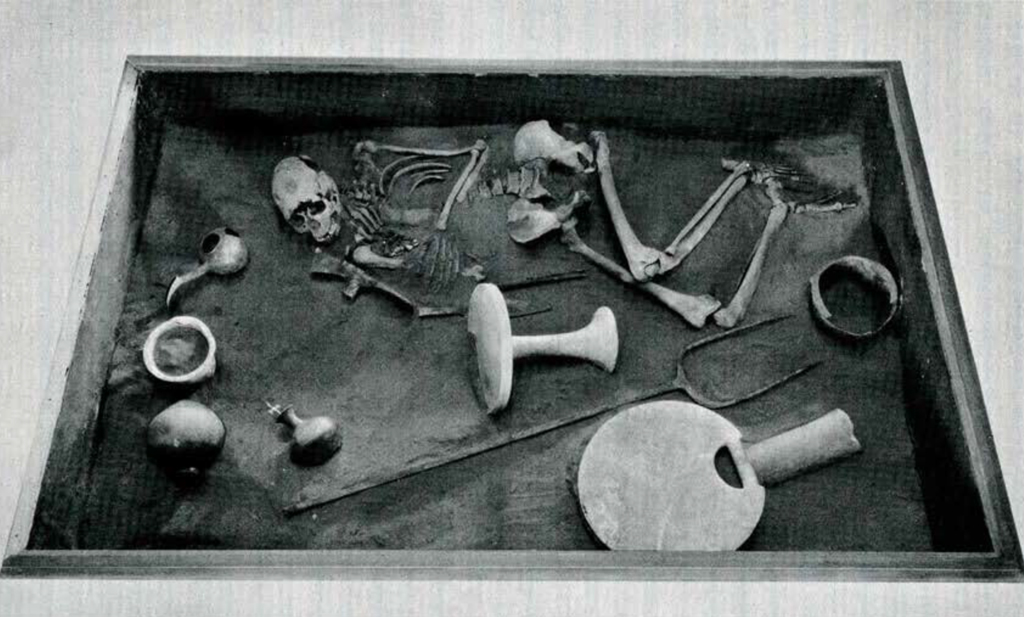THERE has recently been installed in the gallery devoted to the results of the Persian and Assyrian Expeditions a restoration of one of the most striking burials uncovered at Damghan, Persia, by the recently terminated Joint Expedition. The grave was excavated in 1931 by Dr. Erich Schmidt, field director of the Expedition. It is obviously that of a warrior, probably killed in battle and buried with the finest of his earthly possessions. Due to careful drawings, photographs, and measurements made in the field, the restoration is substantially accurate in regard to the position of the skeleton and of the associated objects. The reconstruction [Plate X] is the work of Mr. Paul Neimeyer, and the simulated ground, the base of which is carefully moulded papier maché, represents, it is felt, a great advance in restorations of this character.

Museum Object Numbers: 33-15-326 / 33-15-718 / 33-15-719 / 33-15-720 / 33-15-721 / 33-15-722 / 33-15-723 / 33-15-724 / 33-15-725 / 33-15-726 / 33-15-727 / 33-15-728 / 33-15-729 / 33-15-731
Image Number: 21811
The Warrior, and many other individuals whose graves were found in the same stratum, belonged to the third and last phase of the occupation of Tepe Hissar, it being abandoned thereafter as a habitation. The culture of the people of Hissar III was relatively high, as is evidenced by their proficiency in the use of copper and the precious metals for weapons, tools, and vessels, by the well executed gray pottery, and by the employment of alabaster for vases, bowls, and utensils. The use of alabaster may perhaps indicate influences from Mesopotamia where this stone was much used even in earlier times. Otherwise the culture of Hissar III seems more closely related to that of the Turcoman plains, north of Persia, and east of the Caspian Sea, than to those of inner Iran.
In the Grave of the Warrior particular note should be made of the silver ewer with a tapering spout, of the beads carved from lapis lazuli, chalcedony, cornelian and shell, and of the copper objects: helmet(?), bident, mattock-head, dagger, and grooved chisel. Protruding from the small gray pot the copper ‘wand’ should be noticed: ‘wands’ such as these were found in many Hissar III graves, but having different devices on the end; they were perhaps personal, family, or clan symbols.
The use or purpose of the disc and miniature column of alabaster is unknown. Several other examples of these associated objects were unearthed in this stratum, but no clue was found to explain for what they were used. The two gray pottery jars are not the ones actually found in this grave, but are similar in form and date.
Not only is this exhibit designed to give to the general public a more accurate picture of the methods used by the field excavator in uncovering archaeological material, but also to demonstrate the burial customs and the cultural attainments of the race to which the Warrior belonged.

